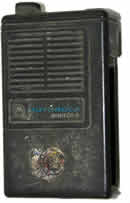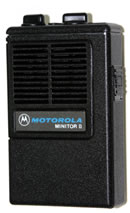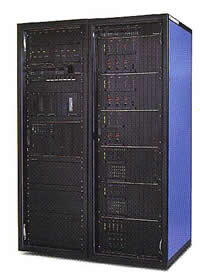BloostonLaw Telecom Update Published by the Law Offices of Blooston, Mordkofsky, Dickens, Duffy & Prendergast, LLP [Portions reproduced here with the firm's permission.] www.bloostonlaw.com |
| Vol. 12, No. 41 | x November 18, 2009 |
 INSIDE THIS ISSUE - USF, intercarrier comp under threat in FCC’s National Broadband Plan.
- FCC identifies USF as “critical gap” in path to future of broadband.
- Comments on 2nd broadband RFI are due November 30.
- FCC seeks comment on measuring broadband adoption.
- FCC seeks comment on health care delivery
|
USF, Intercarrier Comp Under Threat In FCC’s National Broadband Plan In conjunction with developing its National Broadband Plan (NBP), the FCC has asked for more focused comment on its universal service and intercarrier compensation (ICC) policies and to explore various policy options that would further the goal of making broadband universally available to all people of the United States. This re-examination of USF and Intercarrier Comp must be viewed in conjunction with the FCC Broadband Task Force indication that the current USF program is an obstacle to broadband deployment (see related story below), signaling an increased threat to the two main sources of support for the rural telecom industry. Our clients should react strongly to this threat, and take the opportunity to shape funding for broadband in rural, unserved areas, by participating in the broadband proceeding. Clients interested in participating in joint comments BloostonLaw is preparing should contact us promptly. In particular, the FCC seeks comment in the following areas: Size of the Universal Service Fund. The universal service fund (USF) consists of high-cost, low-income (including the Lifeline and Link Up programs), schools and libraries (the E-rate program) and rural health care support mechanisms. Is the relative size of funding for each support mechanism appropriate to achieve the objective of universalization of broadband? That is, if funding should be significantly increased or reduced for one or more of the support mechanisms, should it be reduced or increased in other mechanisms, and if so, how would such changes advance the goal of universalization of broadband? Contribution Methodology. There are recommendations for a numbers or connections-based methodology, an expanded revenue-based methodology, or some combination of the two. Commenters should explain how their preferred solution would impact end users, who ultimately bear the cost of universal service through carrier pass-through charges. Commenters should identify with specificity all assumptions. Commenters should specify how any proposed modifications would alter the relative share of contributions borne by residential consumers as opposed to business consumers. Commenters should address the anticipated impact of universal service pass-through charges under different contribution methodologies on residential households with different consumption characteristics, such as (i) a household with landline voice service, low interstate usage, and no broadband connection, (ii) a household with landline voice service, moderate interstate usage, an average wireless plan, and a broadband connection; and (iii) a household with landline voice service, a wireless family plan with five lines, and a broadband connection. Commenters should specify all assumptions. Transitioning the Current Universal Service High-Cost Support Mechanism to Support Advanced Broadband Deployment. In the past, the Commission and the Federal-State Joint Board on Universal Service have sought comment on various ideas to reform the high-cost mechanism in a manner that would advance broadband deployment. One potential option would be to supplement the existing high-cost programs with one or more additional programs that would target funding for broadband deployment in unserved areas. Another option would be to gradually reduce funding under the existing high-cost programs over a period of years and to transition that funding into a redesigned mechanism that explicitly funds broadband. The FCC encourages both existing eligible telecommunications carriers (ETCs) (both wireline and wireless companies) and other broadband providers to address a number of questions related to these options. Our rural telco clients should emphasize to the Commission that continued funding is needed to expand and upgrade the valuable services that they provide, and that the existing telephone network is one of the best avenues for introducing broadband to rural areas. Impact of Changes in Current Revenue Flows. According to the FCC, some commenters assert that any significant reductions in current levels of universal service high-cost support and/or intercarrier compensation would jeopardize their ability to continue to serve customers and advance the deployment of next generation broadband-capable networks. Others assert that the current systems of support and compensation have led to regulatory arbitrage and inefficient investment and have undermined the deployment of advanced communications. What factual analyses should the Commission undertake to test the validity of such arguments? What would be the financial impact of reducing or eliminating high-cost support for carriers in geographic areas where there already is at least one competitor offering broadband (using any technology) today that does not receive any high-cost support? What would be the financial impact of reducing or eliminating high-cost support for carriers in geographic areas where there already are multiple competitors offering broadband (using any technology), with more than one of those providers receiving high-cost service support. To what extent are existing ICC revenues and high-cost support being used to pay debt obligations? To what extent do carriers securitize high-cost support and/or ICC cash flows and, if this is occurring, how often and why? Identify lenders who are willing to securitize ICC and high-cost support cash flows. Individual carriers or groups of carriers should provide revenue, Earnings Before Interest, Taxes, Depreciation and Amortization (EBITDA) and capex for study areas that receive high-cost funding. For individual carriers or groups of carriers, what percentage of free cash flow (defined as EBITDA minus capex) do high-cost support and/or ICC represent? Carriers should discuss their capital structure, in particular the amount of debt, weighted average interest rate on debt obligations, length of debt obligations, Net Debt/EBITDA and percentage of revenues devoted to paying interest and principal. The Commission seeks to understand how intercarrier compensation payment flows may impact broadband deployment incentives and how any intercarrier compensation reform may change such incentives. The FCC is particularly interested in factual information or data that addresses the question of how the current intercarrier compensation system either supports or inhibits broadband deployment, rather than conclusory assertions that intercarrier compensation should be reformed. Competitive Landscape. In 1997, the Commission adopted a principle of competitive neutrality to guide its future policymaking, concluding that universal service rules should neither unfairly advantage nor disadvantage one provider over another, and neither unfairly advantage nor disadvantage one technology over another. Today, the high-cost fund provides support to some facilities-based broadband providers, but not others. Moreover, virtually all incumbent local exchange companies operating in rural high-cost areas have carrier of last resort (COLR) obligations for voice service, while other providers that are offering voice, video and/or broadband in such areas do not. How does this disparity in regulatory obligation impact the economics of deploying broadband in rural areas? Should the national broadband plan evaluate whether COLR obligations should be revisited in light of the changing competitive landscape? If so, how and why? Should the broadband plan recommend that COLR obligations be removed or modified if any entity no longer is receiving universal service support? What would be the impact of requiring all entities that accept universal service support for broadband to assume some form of COLR obligation for broadband? What would be the impact of requiring entities that accept universal service support for broadband to offer the underlying transmission on a common carrier basis? How do the COLR obligations vary by state? Do any states have “best practices” that promote deployment and use of alternative technologies? Do states permit carriers to satisfy their COLR obligation using wireless or other technologies? If so, which states and should other states be encouraged to do so? Do states permit carriers to satisfy their COLR obligations using VoIP? If not, should states be encouraged do so? Quantify cost savings, both in capital expenditures and operating expenses that could be achieved if we permitted carriers of last resort to meet this COLR obligation through wireless and/or interconnected VoIP service. Responses should explain any assumptions and how the estimated savings was calculated. High-Cost Funding Oversight. What appropriate oversight and accountability mechanisms would be needed to minimize waste, fraud and abuse and to ensure that recipients of any broadband high-cost support use the funds as envisioned? Should the states and/or the federal government adopt new mechanisms to oversee the distribution of any new high-cost funding to support broadband and why? How should the Commission track a recipient’s progress in deploying broadband-capable infrastructure in whatever geographic area is targeted for support? In particular, should the Commission mandate annual submission of financial documentation, certifications, audits, or other forms of verification such as field inspections? Identify current “best practices” for state oversight over eligible telecommunications carriers and their use of USF. Explain the benefits of any identified state’s procedures and identify any modifications that would serve our goal of ensuring that funds are used efficiently and effectively to make broadband available to consumers in the relevant geographic area. Lifeline/Link Up. The Commission previously has sought comment on extending low-income support to establish a Broadband Lifeline/Link Up program. The Commission seeks additional detailed comments on structuring such a program. How should any devices necessary for a low-income broadband program be supported? Who would own such devices, and what would become of these devices should a consumer exit the program or seek to upgrade his/her device? How would consumers purchase such devices – through vouchers, reimbursement, and/or some other means? Should the Commission limit the types of devices available to consumers participating in the program? Commenters should identify with specificity any implementation issues. Should the Commission determine some sort of minimum specifications for supported devices? If so, how should these specifications be set initially and how should they change over time as technology evolves? Commenters should identify with specificity any implementation issues. Commenters should provide estimates of the anticipated demand for a low-income broadband program. How should the Commission determine the appropriate support amounts for devices and for service? Should funding be initially capped for a trial period, and if so, at what level? How much low-income support would be necessary in the aggregate to enable all eligible consumers to participate in a low-income broadband program? Commenters should identify all assumptions. Comments in this GN Docket Nos. 09-47, 09-51, and 09-137 (NBP Public Notice #19) proceeding are due December 7. There is no reply comment opportunity. BloostonLaw contacts: Ben Dickens, Gerry Duffy, and Mary Sisak. FCC Identifies USF As “Critical Gap” In Path To Future Of Broadband The task force gathering data and developing draft proposals for the FCC’s National Broadband Plan says it has identified “critical gaps” in the nation’s policies, programs, and practices that must be filled before America can take advantage of the technological advantages that universal adoption and deployment of affordable, robust broadband can bring. These gaps range across all elements of the broadband ecosystem, including networks, applications, devices, and end-user adoption. Of key importance to rural telecom carriers is the task force’s perception that the current USF program is an impediment to broadband deployment. The task force developed the list of challenges from data gathered in a series of nearly 40 workshops and field hearings, from over 10,000 comments on the National Broadband Plan Notice of Inquiry and 15 public notices, and in the analysis of existing studies and data. The process of gathering and analyzing information is ongoing, and includes a new survey commissioned by the task force that will, for the first time, provide extensive data about households that don’t adopt broadband. Key gaps identified by the task force include: Federal Universal Service Fund (USF) Structure: - Doesn't support broadband deployment and adoption despite over $7 billion spent to subsidize telecommunications annually.
- The majority of USF funding supports affordable phone service, not broadband.
- The four USF programs — high-cost support for rural phone service, support for advanced services in schools and libraries, support for phone service to low-income families, and rural health care support — are not coordinated to maximize deployment opportunities to fill broadband gaps.
- High-cost funding mechanism rewards inefficiency and funds is not determined by broadband needs.
- An unsustainable funding mechanism and increased demands for support have doubled the amount paid by consumers since 2000.
- Accountability is limited for use of high-cost fund for broadband support.
Broadband Adoption Gap: - Increases the cost of digital exclusion to society.
- Broadband adoption levels vary widely across demographic groups.
- Nearly 90 percent of families with incomes of $100,000 or more subscribe to broadband services, compared to 35 percent with incomes of $20,000 or less.
- Rural households are less likely to subscribe than urban households.
- Only 40 percent of Hispanic households subscribe, followed by 46 percent of African-American households, while 65 percent of white households subscribe.
Consumer Information Gap: - Undermines competition, innovation, and choice
- Consumers lack information about actual performance of their broadband service compared to the advertised speeds.
- Consumers can’t accurately compare performance of competing service.
- Application providers lack knowledge of network performance, dampening innovation.
Spectrum Gap: - Frustrates mobile broadband growth.
- Smartphone sales are expected to overtake standard mobile phones by 2011.
- Smartphone subscriptions have increased by 690 percent since 1998, while over-the-air TV viewership decreased by 56 percent.
- Identifying available spectrum, reallocating it, and assigning it is often a long, multi-year process.
- Spectrum is also critical for public safety, telemedicine, smart grid, civic engagement applications.
Deployment Gap: - High costs can limit broadband deployment.
- “Middle Mile” costs for transit and transport of Internet traffic can cost rural providers up to $150 per subscriber annually, almost three times as much as network operations, and can be a serious barrier to rural broadband.
- The lack of efficient coordination when digging trenches for fiber and other expensive infrastructure costs dramatically increases the cost of deployment.
- Other outside plant costs, including pole attachments, also drive deployment gap.
- Deployment gaps for access to advanced, high-speed broadband occur in the small business market marketplace, in rural areas, and to consumers in many residential neighborhoods across the nation.
Television Set-Top Box Innovation Gap: - Hinders convergence, utilization, and adoption.
- The convergence of video, TV and Internet Protocol-based technology is creating a new broadband medium that could drive adoption and utilization.
- Lack of devices is a major barrier for adoption — 99 percent of U.S. households have a TV versus 76 percent with PCs.
- Retail navigation device and set–top-box market competition has not emerged, limiting innovation.
Personal Data Gap: - Users need to control their own information.
- Personal data is increasingly digitized and moving to the Internet “cloud.”
- Users have little control over their personal information.
- Ensuring privacy and security will enable a new generation of applications, and improve top national priorities that would benefit by secure but accessible personnel information.
Harnessing broadband to achieve key national purposes — better health care, education, government performance and civic engagement, economic opportunity, public safety, improvements in energy conservation and environmental protection — requires better connectivity, although the level of connectivity necessary depends on the nature of the institutions and applications. BloostonLaw contacts: Ben Dickens, Gerry Duffy, and Mary Sisak. Comments On 2nd Broadband RFI Are Due November 30 The Rural Utilities Service (RUS) and the National Telecommunications and Information Administration (NTIA) have published in the Federal Register the joint Request for Information (RFI) seeking public comment on certain issues relating to the implementation of the Broadband Initiatives Program (BIP) and the Broadband Technology Opportunities Program (BTOP). This is the second joint RFI that the agencies have issued since the enactment of the American Recovery and Reinvestment Act of 2009, which established these broadband initiatives (BloostonLaw Telecom Update, November 11). Comments in this Docket Number: 0907141137-91375-05 proceeding are due November 30. BloostonLaw has drafted comments addressing some of the shortcomings encountered during the first funding round. Clients interested in reviewing and/or participating in these comments should contact us as soon as possible. The input the agencies expect to receive from this process is intended to inform the second round of funding, which will reported be the last round as well. In particular, the agencies seek to gather information that will help them improve the broadband programs by enhancing the applicant experience and making targeted revisions to the first Notice of Funds Availability (NOFA), if necessary. In general, this includes: Streamlining the Applications. In what ways should RUS and NTIA streamline the applications to reduce the burden on applicants, while still obtaining the requisite information to fulfill the statutory requirements set forth in the Recovery Act? New Entities. What type of information should RUS and NTIA request from new businesses, particularly those that have been newly created for the purpose of applying for grants under the BIP and BTOP programs? Transparency and Confidentiality. Which data should be made publicly available and which data should be considered confidential or proprietary? Outreach and Support. What method of support and outreach was most effective? What should be done differently in the next round of funding to best assist applicants? NTIA Expert Review Process. To further the efficient and expeditious disbursement of BTOP funds, should NTIA continue to rely on unpaid experts as reviewers? Or, should NTIA consider using solely Federal or contractor staff? Policy Issues. RUS and NTIA welcome suggestions for targeted funding proposals and seek comment on how they can better target their remaining funds to achieve the goals of the Recovery Act. Economic Development. Should RUS and/or NTIA allocate a portion of the remaining funds available under the BIP and BTOP programs to promote a regional economic development approach to broadband deployment? Definitions: In what ways should the definitions of “unserved,” “underserved,” and “broadband” be revised? How should NTIA and RUS assess the cost effectiveness or cost reasonableness of a particular project? What other substantive changes to the NOFA should RUS and NTIA consider that would encourage applicant participation, enhance the programs, and satisfy the goals of the Recovery Act? BloostonLaw contacts: Ben Dickens, Gerry Duffy, John Prendergast, and Mary Sisak. FCC SEEKS COMMENTS ON MEASURING BROADBAND ADOPTION: The FCC seeks comment on measuring broadband adoption, quantifying the individual costs to non-adopters, measuring the cost to society of having a large group of non-adopters, and identifying and remedying barriers to adoption. The FCC also seeks data about existing adoption programs and studies, in order to contribute to and facilitate the Commission’s development of the National Broadband Plan (NBP). The FCC notes that adoption statistics often focus on individual or household subscription rates. Is that the best way to measure adoption? If not, what are the alternatives? Is someone who frequently accesses broadband at work or in the library, but not at home, an “adopter?” Is the use of a web-enabled smart phone sufficient to make someone an “adopter” of broadband? Should adoption be measured more by the manner, type or frequency of use of certain types of applications? If so, will those applications be standard across all groups of people? The Commission would like to understand the costs faced by individual consumers who do not adopt broadband as well as the societal costs of having a large portion of society that remains unconnected to broadband. The Commission wishes to further understand the reasons why some consumers, who have access to broadband, do not adopt. The 2009 Pew Broadband Adoption Study found, generally, that relevance, price, availability, and usability were the main reasons cited for not using broadband at home. Based on this and other research and comments filed in the record, the Commission believes that the primary barriers non-adopters face include: affordability of service, affordability of hardware, insufficient digital and technical literacy levels, unawareness of the personal relevance and utility of broadband technology and online content and an inability to use existing technology and applications due to physical or mental disabilities. Is this an accurate and comprehensive list of barriers faced by non-adopters? As the Commission develops recommendations to maximize broadband adoption and utilization how can it remedy each barrier faced by non-adopters? Many parties have suggested that the Commission utilize the Lifeline and Link Up programs to support broadband connection charges, devices and service costs for low-income consumers. What other specific federal policies or programs to address affordability of service and hardware should the Commission consider recommending? Comments in this GN Docket Nos. 09-47, 09-51, and 09-137 (NBP Public Notice # 16) proceeding are due December 2. There is no reply date. BloostonLaw contacts: Ben Dickens, Gerry Duffy, John Prendergast, and Mary Sisak. FCC SEEKS COMMENT ON HEALTH CARE DELIVERY ELEMENTS OF NATIONAL BROADBAND PLAN: The FCC seeks tailored comment on how advanced infrastructure and services could help achieve efficient implementation of health information technology (IT) applications. The FCC wishes to further understand gaps between current connectivity infrastructure and the connectivity requirements for various health IT applications across the healthcare ecosystem. Congress has also mandated that health care providers have access to advanced services through the federal universal service fund (USF)—e.g., the rural health care support mechanism and the rural health care Pilot Program. The Commission seeks the current state of Internet connectivity in hospitals, community health clinics, outpatient centers, physician offices, long-term care facilities, homes, emergency medical responders, Indian Health Service, Department of Health and Human Services, and other health service providers on tribal lands. What type of connection? What speeds? What issues? Multiple health IT applications are being deployed using public and private communications networks. The FCC seeks to better understand the underlying IT infrastructure necessary to support successful implementation of current and emerging health IT applications, including: electronic health records, real time video for Telehealth consultations and diagnoses, remote patient monitoring systems, mobile and other portable remote monitoring systems, and other applications that enable or cause advanced healthcare delivery. What are the specific network requirements (e.g., transmission speeds, minimum guaranteed bandwidths, latency, jitter, reliability, coverage, others)? How might these differ based upon the content (e.g., text, image, or video) of the application? What are the primary drivers and barriers to taking advantage of available internet connectivity across delivery settings? What in the healthcare sector may be a disincentive to invest in broadband services (particularly for telemedicine)? How does the existing rural health care support mechanism affect nationwide connectivity? Are there instances where the discount structure of the existing rural health care support mechanism provides incentives for rural health care providers to maintain slower, more expensive connections, rather than purchasing faster connections that may be less expensive? Provide specific examples of ways in which the mechanism may impact how health care providers choose broadband service offerings. What role should federal universal service support have in the funding of broadband health care networks? For example, the rural health care support mechanism currently provides, to public and non-profit health care providers in rural areas, discounts on the installation and monthly charges for telecommunications and Internet access service used for the provision of health care. What would be the impact on the delivery of health care if the rural health care mechanism supported network backbone only (i.e., infrastructure), or supported the use of telehealth applications? Comments in this GN Docket Nos. 09-47, 09-51, and 09-137; and WC Docket No. 02-60 (NBP Public Notice # 17) proceeding are due December 4. There is no reply date. BloostonLaw contacts: Ben Dickens, Gerry Duffy, John Prendergast, and Mary Sisak. FCC SEEKS COMMENT ON RELATIONSHIP BETWEEN BROADBAND AND ECONOMIC OPPORTUNITY: The FCC seeks comment on a series of questions related to small businesses (defined as businesses with 500 or fewer employees), medium and large businesses (defined as businesses with more than 500 employees), non-profit organizations, economic opportunity and workforce development. Community Hubs. In areas of sub-optimal deployment and adoption, local community hubs (defined as places such as libraries, community colleges, job training centers, unemployment offices, etc.) and organizations often present themselves as stop-gaps for individuals to obtain access to broadband. The FCC is looking for information about how these hubs are used in ways that create economic opportunities. What are the key community hubs that often act as access points for individuals to gain broadband access? What is the current broadband availability rate at libraries? Community colleges? Job training centers? Unemployment offices? Computing centers and tribal “chapter houses" on tribal lands? Business Adoption and Usage. In cultivating the economic benefits of broadband, adequate availability, adoption and usage of broadband by business is a central component. The FCC seeks to better understand what level of connectivity is required for businesses of varying sizes and in different business verticals, and how those capabilities are best utilized by businesses. To what extent is broadband available to businesses across the country today? What applications are necessary to enable telework and/or telecommuting (both fixed and mobile)? How does telework and/or telecommuting by employees impact business productivity? Broadband’s Role in Regional Economic Development. In areas where broadband deployment is new, what new business and jobs have come that were not previously possible? Did these businesses move from somewhere else, or did they not exist at all previously? What is the minimum connection availability that attracts new businesses and jobs? Comments in this GN Docket Nos. 0947, 0951, and 09137 (NBP Public Notice # 18) proceeding are due December 4. There is no reply date. BloostonLaw contacts: Ben Dickens, Gerry Duffy, John Prendergast, and Mary Sisak. NANC WORKING GROUP RECOMMENDS PORTING INTERVAL COMPLIANCE DEADLINES: Last May, the FCC reduced the porting interval for simple wireline and simple intermodal port requests from four business days to one business day (BloostonLaw Telecom Update, May 20). Also in its Local Number Portability Porting Order, the FCC directed the North American Numbering Council (NANC) to develop new LNP provisioning process flows that take into account the shortened porting interval. On November 2, NANC Chairman Betty Kane submitted the recommendation of the Local Number Portability Working Group, which, she said, was “supported by the majority of NANC members but which due to time constraints was not able to be adopted at a publicly noticed meeting of the full NANC.” Pursuant to the process flows, NANC's interpretation of the FCC's one business day porting interval reduces the time a porting-out carrier has to verify a port request to only four business hours. NANC recommended July 31, 2010, as the implementation deadline for affected entities (i.e., large carriers), and January 31, 2011, as the implementation deadline for small providers. The FCC considers providers with fewer than 2 percent of the nation’s subscriber lines installed in the aggregate nationwide and Tier III wireless carriers, as defined in the E911 Stay Order, to be small providers. What constitutes a 2 percent provider will be calculated based on an aggregate of incumbent LEC and competitive local exchange carrier (LEC) lines, based on the Commission’s most recent industry statistics available as of August 3, the effective date of LNP Order. In the E911 Stay Order, the Commission classified Commercial Mobile Radio Service (CMRS) carriers with 500,000 subscribers or fewer as of the end of 2001 as Tier III wireless carriers. BloostonLaw contacts: Ben Dickens, Gerry Duffy, and Mary Sisak. CLUB TEXTING ASKS FCC TO DECLARE THAT TEXT BROADCASTERS ARE NOT SENDERS OF TEXT MESSAGES UNDER TCPA: Club Texting, Inc. has filed a petition requesting a declaratory ruling regarding the FCC’s rules under the Telephone Consumer Protection Act (TCPA). Specifically, Club Texting has asked the Commission to clarify that, consistent with the treatment of fax broadcasters, text broadcasters are not senders of text messages under the TCPA. Notably, the Commission’s rules prohibit the initiation of “any telephone call (other than a call made for emergency purposes or made with the prior express consent of the called party) using an automatic telephone dialing system or an artificial or prerecorded voice, to any telephone number assigned to . . . cellular telephone service . . . .” The Commission concluded that this prohibition applies to both voice calls and text calls to wireless numbers, provided the call is made to a telephone number assigned to such wireless service. In addition, the rules prohibit the use of any telephone facsimile machine, computer, or other device to send an unsolicited advertisement to a telephone facsimile machine. The rules further provide that a facsimile broadcaster will be liable for violations of the rules if it demonstrates a high degree of involvement in, or actual notice of, the unlawful activity and fails to take steps to prevent such facsimile transmissions. Section 64.1200(f)(6) states that a facsimile broadcaster is a person or entity that transmits messages to telephone facsimile machines on behalf of another person or entity for a fee. Comments in this CG Docket No. 02-278 proceeding are due November 30, and replies are due December 7. BloostonLaw contacts: Ben Dickens, Gerry Duffy, and Mary Sisak. COMMENT SOUGHT ON MOVING TOWARD A DIGITAL DEMOCRACY: The FCC notes that the American Recovery and Reinvestment Act of 2009 directs it, in its development of a National Broadband Plan, to include “a plan for the use of broadband infrastructure and services in advancing … civic participation.” Accordingly, the Commission seeks tailored comment on how broadband can help to bring democratic processes—including elections, public hearings and town hall meetings—into the digital age, thereby encouraging and facilitating citizen opportunities to engage and participate in their democracy. Comments in this GN Docket Nos. 09-47, 09-51, and 09-137 (NBP Public Notice #20) proceeding are due December 10. There is no reply date. BloostonLaw contacts: Ben Dickens, Gerry Duffy, and Mary Sisak. FCC SETS TIME FRAMES FOR STATE AND LOCALITY PROCESSING OF APPLICATIONS FOR WIRELESS TOWERS: At today’s open meeting, the FCC adopted a Declaratory Ruling, clearing the way for broadband deployment by establishing time frames of 90 days for collocations and 150 days for all other tower siting applications reviewed by state and local governments. The FCC said this action will assist in speeding the deployment of next generation wireless networks while respecting the legitimate concerns of local authorities and preserving local control over zoning and land use policies. Congress specifically requires that state and local authorities act “within a reasonable period of time” on requests for tower siting. The deployment of next generation mobile broadband networks promises tremendous benefits for American businesses and consumers and realizing these benefits will require new physical networks, including many new towers. While most state and local jurisdictions currently process tower siting applications in a timely fashion, the FCC found that there are many instances of unnecessary delays. In order to ensure a timely review of these applications and to prevent unnecessary delay, the FCC interprets a “reasonable period of time” under Section 332(c)(7) of the Communications Act as 90 days for collocations and 150 days for all other towers. If a jurisdiction “fails to act” on the application within this reasonable time period, applicants may file a claim for relief in court within 30 days of the failure to act. The court will then decide what action to take based on all the facts of the case. The FCC said its decision achieves a balance by defining reasonable and achievable time frames for State and local governments to act on zoning applications while not dictating any substantive outcome on any particular case or otherwise limiting State and local governments’ fundamental authority over local land use. The FCC stated that the time frames adopted, and the requirement that parties seek injunctive relief from a court, are consistent with preserving State and local sovereignty and the intent of Congress. The ruling also finds that it is a violation of the Communications Act for a State or local government to deny a wireless service facility siting application because service is available from another provider. Finally, the ruling denies CTIA’s request to find that it is a violation of the Communications Act for a State or local regulation to require a variance or waiver for every wireless facility siting. BloostonLaw contacts: Hal Mordkofsky, John Prendergast, and Richard Rubino. Tower Compliance Manual BloostonLaw has assembled a compliance manual for all tower/antenna structure owners, as well as any licensee mounting antennas on structures. The manual helps structure owners and licensees avoid FCC fines, minimize Federal and state approval delays, and minimize or avoid the potential for civil and/or criminal liability that could be associated with tower operations/accidents. The manual includes a detailed explanation of FCC, FAA and other Federal regulatory requirements so that your staff can understand the legal do’s and don’ts associated with tower construction and antenna mounting. We have also developed checklists that can be used by your employees and contractors to (1) make sure that necessary compliance steps are taken and (2) create a paper trail documenting such compliance. There are separate checklists for antenna structure owners and radio licensees that will use such structures. These checklists cover such issues as environmental protection, historic preservation, harmful RF radiation limits, interference protection, aviation safety, and Federal reporting requirements. A sample tower log is included. In recent years, tower owners have faced million dollar fines and even higher civil liabilities due to rule violations that may contribute to an aviation accident. Similar liability can arise from environmental or harmful radiation violations. Also, many licensees do not realize that, for every antenna mounted in the United States, the licensee must either obtain the prior approval of the applicable State Historic Preservation Officer (SHPO), or establish that the antenna qualifies for an exemption from this requirement. BloostonLaw is offering its antenna structure compliance manual in binder format, with the checklists provided on CD-ROM as well, so that you can print off the appropriate checklist for each new structure or antenna. Please contact us if you wish to purchase the manual. BloostonLaw contacts: Hal Mordkofsky, 202-828-5520; John Prendergast, 202-828-5540; and Richard Rubino, 202-828-5519. SPRINT SUED OVER INTERCONNECTION AGREEMENT ISSUES: According to the Blog of the Legal Times, a group of telecommunications providers has filed a $20 million lawsuit against Sprint Communications in Virginia federal court, claiming the company owes them money for the use of their networks. The 19 companies, which are subsidiaries of Monroe, La.-based Century-Link, contend that Sprint is underpaying for the use of their local network facilities, the Legal Times reports. According to the complaint, the companies were formerly a part of Sprint Nextel, but were spun off in 2006. At the time, Sprint had signed interconnection agreements, governing how much it would pay the companies to route long-distance calls through their local networks. The complaint filed in the U.S. District Court for the Eastern District of Virginia states that in June 2009, Sprint began refusing to pay the amount it had agreed to and instead substituted its own lower rate, the Legal Times says. “In effect, the Sprint Defendants have purported to rewrite the Sprint [interconnection agreements] unilaterally,” the complaint states. |



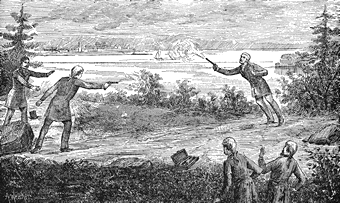







 Named as one of the top 5 U.S. destinations for fourteen years, Charleston combines luxury and history with an international flavor that will make any visitor feel at home. You can stand on the site of the first shot of the Civil War, come face-to-face with a giant sea turtle, tour an antebellum mansion, explore a WWII aircraft carrier, stroll through blossoming gardens, or just enjoy a trip to the beach or a round of championship golf.
Named as one of the top 5 U.S. destinations for fourteen years, Charleston combines luxury and history with an international flavor that will make any visitor feel at home. You can stand on the site of the first shot of the Civil War, come face-to-face with a giant sea turtle, tour an antebellum mansion, explore a WWII aircraft carrier, stroll through blossoming gardens, or just enjoy a trip to the beach or a round of championship golf. 



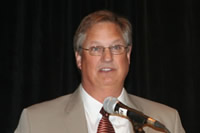












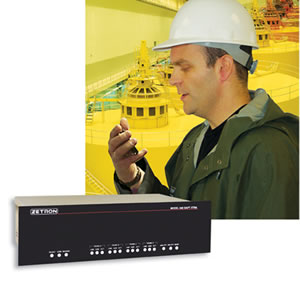 The Model 640 DAPT-XTRA Paging Terminal is a cost effective solution for small to medium-sized systems and private organizations offering a paging service based on bureau-type operator paging and/or direct telephone access. The 640 supports up to 1,500 users with up to 4 telephone lines. It also supports voice paging, voice prompts, talkback paging, and alphanumeric paging.
The Model 640 DAPT-XTRA Paging Terminal is a cost effective solution for small to medium-sized systems and private organizations offering a paging service based on bureau-type operator paging and/or direct telephone access. The 640 supports up to 1,500 users with up to 4 telephone lines. It also supports voice paging, voice prompts, talkback paging, and alphanumeric paging.  Zetron's Remote Monitoring equipment provides monitoring and notification of unusual conditions and status changes. Messages are automatically transmitted over a radio or a public address system. Notification can be sent via speaker or radio announcement, telephone, cellular phone, or paging.
Zetron's Remote Monitoring equipment provides monitoring and notification of unusual conditions and status changes. Messages are automatically transmitted over a radio or a public address system. Notification can be sent via speaker or radio announcement, telephone, cellular phone, or paging. 












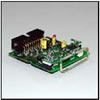
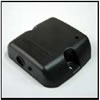



 Is texting the future of emergency communications? The state is looking at whether 911 texting will help crime victims who are unable to call for help.
Is texting the future of emergency communications? The state is looking at whether 911 texting will help crime victims who are unable to call for help.
